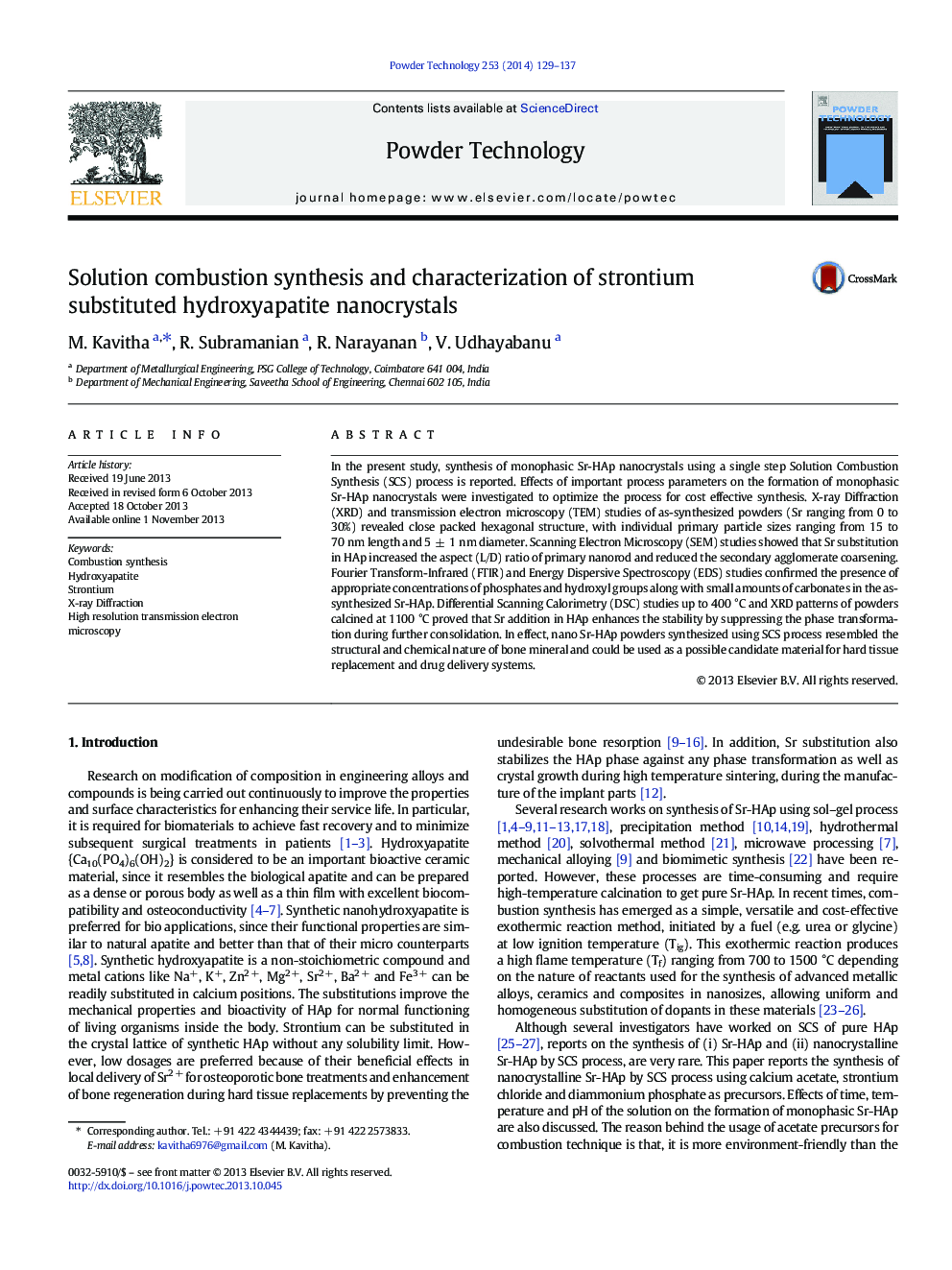| Article ID | Journal | Published Year | Pages | File Type |
|---|---|---|---|---|
| 236440 | Powder Technology | 2014 | 9 Pages |
•Nanosized Strontium and carbonate co-substituted Hydroxyapatite was synthesized.•A single step Solution Combustion synthesis was used to produce nano Sr-HAp.•Low cost and environment friendly precursors were used.•Sr addition increased the L/D ratio of nanorods and lattice parameters of HAp.•Sr addition suppressed phase transformation and crystal growth at high temperatures.
In the present study, synthesis of monophasic Sr-HAp nanocrystals using a single step Solution Combustion Synthesis (SCS) process is reported. Effects of important process parameters on the formation of monophasic Sr-HAp nanocrystals were investigated to optimize the process for cost effective synthesis. X-ray Diffraction (XRD) and transmission electron microscopy (TEM) studies of as-synthesized powders (Sr ranging from 0 to 30%) revealed close packed hexagonal structure, with individual primary particle sizes ranging from 15 to 70 nm length and 5 ± 1 nm diameter. Scanning Electron Microscopy (SEM) studies showed that Sr substitution in HAp increased the aspect (L/D) ratio of primary nanorod and reduced the secondary agglomerate coarsening. Fourier Transform-Infrared (FTIR) and Energy Dispersive Spectroscopy (EDS) studies confirmed the presence of appropriate concentrations of phosphates and hydroxyl groups along with small amounts of carbonates in the as-synthesized Sr-HAp. Differential Scanning Calorimetry (DSC) studies up to 400 °C and XRD patterns of powders calcined at 1100 °C proved that Sr addition in HAp enhances the stability by suppressing the phase transformation during further consolidation. In effect, nano Sr-HAp powders synthesized using SCS process resembled the structural and chemical nature of bone mineral and could be used as a possible candidate material for hard tissue replacement and drug delivery systems.
Graphical abstractFigure optionsDownload full-size imageDownload as PowerPoint slide
